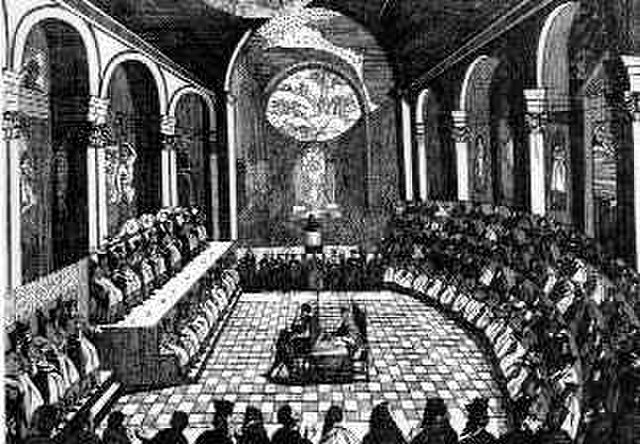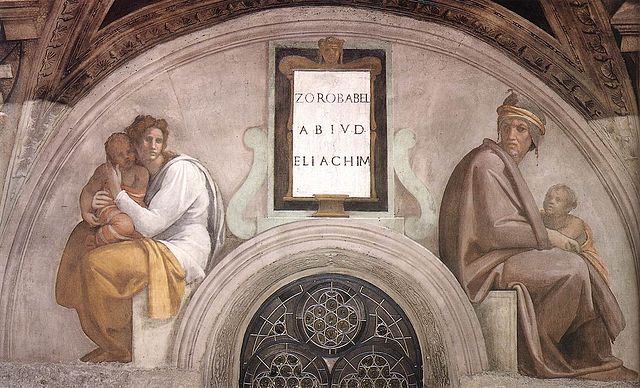Pope Leo III was bishop of Rome and ruler of the Papal States from 26 December 795 to his death. Protected by Charlemagne from the supporters of his predecessor, Adrian I, Leo subsequently strengthened Charlemagne's position by crowning him emperor. The coronation was not approved by most people in Constantinople, although the Byzantines, occupied with their own defenses, were in no position to offer much opposition to it.
Mosaic at Triclinium Leoninum
Detail from The Coronation of Charlemagne by Raphael (1517)
The pope, also known as the supreme pontiff, Roman pontiff or sovereign pontiff, is the bishop of Rome, visible head of the worldwide Catholic Church, and has also served as the head of state or sovereign of the Papal States and later the Vatican City State since the eighth century. From a Catholic viewpoint, the primacy of the bishop of Rome is largely derived from his role as the apostolic successor to Saint Peter, to whom primacy was conferred by Jesus, who gave Peter the Keys of Heaven and the powers of "binding and loosing", naming him as the "rock" upon which the Church would be built. The current pope is Francis, who was elected on 13 March 2013.
Pope Francis in 2021
Gregory the Great (c. 540–604), in a painting by Carlo Saraceni, c. 1610, Rome.
As part of the Catholic Reformation, Pope Paul III (1534–1549) initiated the Council of Trent (1545–1563), which established the triumph of the papacy over those who sought to reconcile with Protestants or oppose papal claims.
A fresco of Eliakim in Sistine Chapel, Vatican City






